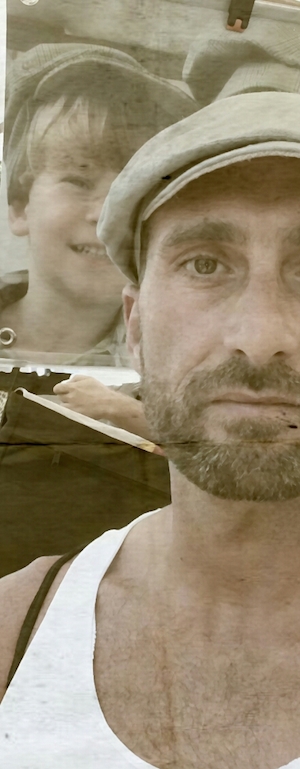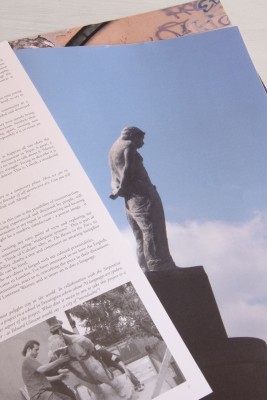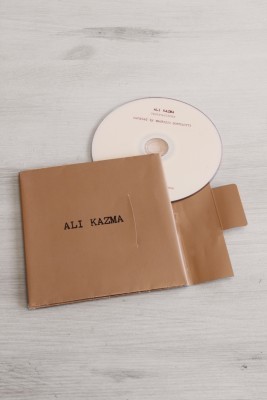In Berlin, it only takes a stroll outside at any time during the day, or night, to run into an impressive number of people dedicated to the most disparate activities, or simply to the art of leisure.
There’s one who sits blissfully on the grass, or by the riverside, reading a book, barefoot. There’s one sitting astride a wall, ruined, or embellished, by graffitis, chatting to a friend; then there’s one sitting on a bench, spending countless hours smoking joints and complaining about the world.
There’s this one roaming around a food market- one among many- or peering about second-hand booths, in hopes to find something original to buy, or to hit a bargain. There’s one, up since the early morning; wandering with a beer in one hand and the dog on the leash; and there’s also one who may be on her way back from the club and as the sun rises, she is still looking for the last venue that’s still open. There’s one sitting on the table of a café, sipping, in company, or alone, with his own Macbook. There’s one with thousands of plastic bags around the arm, making rounds through several establishments, on a shopping spree; the one who sings in front of the subway station with his hat on his feet, glittering with spare change; one who lies dormant in the park and one playing frisbee or straight football right besides him.
There’s one riding her bike, with the iPod headphones plugged into her ears; one who enjoys that one ray of sunlight as soon as the wind carries away the clouds; one who walks, distracted, pressing whatever keys on his own cellphone, and there’s the usual crowd of boys and girls, eating, or drinking at the table of a bar, or a restaurant. Especially to those who come here for the first time it is striking to the eye; because, unlike so many other European capitals, overcrowded only in the centers of major interest and mostly by tourists, in Berlin, this variegated ‚panorama‘ is a part of normality. As a consequence of all this, there’s more than a handful of people who, exaggerating a bit, think that this is some sort of amusement park, or even, the real ‚Santa’s workshop‘. Those who live here, however, know that reality, as always, is much more difficult and complex. Berlin is still a rather affordable city and one can still get by with little, even by practicing fairly unconventional jobs- in fact many people hailing from other countries can sustain themselves with their own occupation as artists, musicians or something similar. Of course, while there’s one too many shipwrecked individuals, who get lost in the seducing Berliner nightlife, there are those- perhaps in fewer numbers- who play the game and succeed, taking advantage of the many oportunities of a vibrant city, full of ferment and creative energy. Amid this swarm of young people, Italians are usually regarded as loud, always on the phone and fashionable; some may even think that they have come here only for clubbing or to add up the pile lazy slackers in search of a different experience, or as an exitway from narrow and provincial realities; but, stereotypes aside, Germany is still a country where merit is a value that makes the difference. There are no clichés that could hold water: Those who are witty and resourceful- the real doers- will not find it difficult to be cherished for their competences and professionality.
Sibilla Ferrara a grafic designer from Florence
An example of this sort is Sibilla Ferrara. A doctor in Art History at the Università degli Studi di Firenze, Sibilla represents best the Italian taste and creativity in foreign countries. After having collaborated with the center of international contemporary art Quarter of Florence , she completed her formation at the cultural association of Florence- La Corte Arte Contemporanea-, which allowed her to cultivate a lucid and personal point of view in the field of web and graphic design. In Berlin since 2007, she founded makingthinkshappen a design studio specialized in the realization of artist and art-related books, layouts for magazines, logos and webdesign, thus creating a strong point of reference for Italian artists in Berlin and for numerous art galleries and museums with offices in the German capital. One of her biggest merits has been to manage to export her taste and inspiration of Italian manufacture. A regular visitor of antique markets and bookstores during her sojourns in Florence, always attentive to the most original signboards and slogans, an eager reader of fashion, design and typography magazines, collector of the most beautiful vinyl covers, as well as a devout admirer of Russian avant-garde movies, Sibilla strives to bring all of her interests into her work. “In Berlin – she tells me- everything is much simpler, compared to Italy. It’s easier to rent a studio large enough to greet your clients and work; it’s easier for artists, galleries and museums to turn to you because they appreciate your work and not because your name is already known or because you have the right contacts. Since I arrived here, I’ve had the opportunity to get involved and work with museums, galleries, institutions and editorial houses. I don’t know if I would have managed to develop all of this so quickly in Italy.” Sibilla explains to me that, when she needs to conceive and produce a book in the sector of contemporary art, she always departs from the in-depth study of the object of publication and, more generally, from the work of the artist. The visit to the artist’s studio, the conversations aimed at understanding the meaning and conceptual direction of the work of art, since the detailed analysis of the artistic production of the client are fundamental steps prior to the choice of materials and the design which best represents the idea at the core of the project. For her, it’s not simply about accomplishing an aesthetically captivating book, but to be able to reenact in the catalogue, the very essence of the artwork. In order to induce the idea brightly into my head, she tells me: “For a work in which the concept was that of archiving, I chose a format and material such as to render the catalogue quickly accesible, like an agenda, so it refers to the pivotal idea of the exhibition. To chase after this goal- she states- satisfies the expectations of the customer and underlines the features of my own design.” When I ask her if she is happy about the decisions she took, Sibilla, without hesitation, replies that it feels right to be here and that she would not turn around. She finds the idea that most have about Berlin unbearable and she stresses out that, just as her, there are many dwellers in this city who have succeeded in accomplishing their own goals, even though she confesses to me with a big smile, that as soon as she finds some time-out from her obligations and the weather plays along, she also runs to the park to relish with the group of lazy Italians.
Sibilla Ferrara, una graphic design a Berlino
A Berlino basta passeggiare in una qualsiasi ora del giorno o della notte, per incrociare un numero impressionante di persone dedite alle attività più disparate, o semplicemente all’ozio. C’è chi siede beato su un prato oppure in riva a un fiume leggendo un libro a piedi scalzi. C’è chi, a cavalcioni su un muretto imbrattato o abbellito da graffiti, parla con un amico o chi, seduto su una panchina, trascorre ore fumando canne lamentandosi del mondo. C’è chi va in giro per uno dei tanti mercati alimentari o per bancarelle dell’usato nella speranza di trovare qualcosa d’originale da comprare o di spuntare un buon affare. C’è chi, sin dalle prime ore del mattino, vagabonda con la birra in mano e il cane al guinzaglio e chi, magari di ritorno da qualche club, alle prime ore dell’alba va in cerca dell’ultimo locale ancora aperto. C’è chi, al tavolo di un caffè, beve in compagnia o è da solo con il proprio mac. C’è chi, con mille buste intorno al braccio, gira per negozi facendo shopping; chi canta davanti alla fermata di una metropolitana col cappello ai piedi luccicante di monetine; chi dorme sdraiato in un parco e chi gli gioca accanto con un frisbee o un pallone. C’è chi va in bici con le cuffie dell’i-pod nelle orecchie; chi si gode un raggio di sole non appena il vento spazza via le nuvole; chi cammina distratto digitando qualcosa sul proprio cellulare, e poi ancora schiere di ragazzi che mangiano o bevono al tavolo di un bar o di un ristorante. Soprattutto a chi viene qui per la prima volta, è una cosa che salta súbito all’occhio, perché, a differenza di tante altre capitali europee, affollate solo nei centri di maggior interesse e soprattutto da turisti, a Berlino questo “panorama” così variegato è la normalità. Proprio in conseguenza di ciò, non sono pochi quelli che, esagerando un po’, pensano sia una sorta di parco dei divertimenti, o addirittura un vero e proprio “paese dei balocchi”. Chi ci vive, invece, sa che la realtà, come sempre, è molto più difficile e complessa. Berlino è ancora una città piuttosto economica, e, facendo anche lavori non convenzionali, si riesce a vivere con poco: in tantissimi, infatti, vengono qui da altri paesi e vivono col proprio lavoro di artisti, musicisti o altro ancora. Sicché, se sono molti quelli che naufragano, perdendosi nella seducente vita notturna berlinese, ce ne sono altri – forse meno numerosi – che riescono ad avere successo sfruttando le occasioni di una città vitale, piena di fermenti e di energie creative. In questa moltitudine di giovani, gli italiani solitamente sono considerati rumorosi, sempre al telefono e modaioli; si pensa magari che vengano qui solo a fare clubbing o ad infoltire lo stuolo di nullafacenti in cerca di un’esperienza diversa o in fuga da realtà chiuse e provinciali ma, stereotipi a parte, la Germania è ancora un paese dove il merito è un valore che fa la differenza. Non c’è cliché che tenga: chi è in gamba e ha voglia di fare non ha difficoltà a essere apprezzato per competenza e professionalità. Un esempio di tal genere è Sibilla Ferrara. Dottoressa in storia dell’arte all’Università degli Studi di Firenze, Sibilla rappresenta al meglio il gusto e la creatività italiana all’estero. Dopo aver collaborato con il centro d’arte contemporanea internazionale Quarter di Firenze, ha completato la sua formazione presso l’associazione culturale di Firenze La Corte Arte Contemporanea – che le ha consentito di maturare un lucido e personale punto di vista nel campo del web and graphic design. A Berlino dal 2007, ha fondato makingthinkshappen, studio di design specializzato nella realizzazione di cataloghi, libri d’artista, layout di riviste, loghi e web design, dando così vita a un forte punto di riferimento per gli artisti italiani a Berlino e per numerose gallerie d’arte e musei con sede nella capitale tedesca. Uno dei suoi maggiori meriti è stato quello di essere riuscita a esportare il suo gusto e la sua ispirazione di matrice italiana. Assidua frequentatrice nei suoi soggiorni a Firenze di mercatini di antiquariato e librerie, attenta alle insegne più originali, lettrice di riviste di moda, di design e di tipografia, collezionista delle più belle cover di vinili, nonché appassionata cultrice di film delle avanguardie russe, Sibilla cerca di far confluire tutti i suoi interessi nel lavoro. „A Berlino – mi dice – è tutto più semplice rispetto all’Italia. È più facile affittare uno studio grande in cui ricevere clienti e lavorare; è più facile che artisti, gallerie e musei si rivolgano a te perché apprezzano i tuoi lavori e non perché il tuo nome sia già conosciuto o perché abbia i contatti giusti. Sin dal mio arrivo, ho avuto la possibilità di confrontarmi e lavorare con musei, gallerie, istituzioni e case editrici. Non so se in Italia ci sarei riuscita così rapidamente.“ Sibilla mi spiega che, quando deve ideare e poi realizzare un libro nel settore dell’arte contemporanea, parte sempre dallo studio approfondito dell’oggetto della pubblicazione e, nello specifico, del lavoro dell’artista. Lo studio visit, i colloqui volti a comprendere il significato e la direzione concettuale delle opere, nonché l’analisi dettagliata della produzione artistica del cliente, sono passi fondamentali per la scelta dei materiali e del design che meglio rappresentino le idee alla base del progetto. Per lei non si tratta semplicemente di realizzare un libro esteticamente accattivante, ma di riuscire a far rivivere nel catalogo l’essenza stessa delle opere. Per rendermi le idee più chiare mi racconta: „Per un lavoro in cui il concept era quello dell’archiviazione, ho scelto un formato e materiali tali da rendere il catalogo consultabile come un agenda, proprio affinché rimandasse all’idea fulcro della mostra. Perseguire questo obiettivo – precisa – soddisfa le aspettative del cliente e consente la riconoscibilità del mio design.“ Quando le domando se sia contenta delle sue scelte, Sibilla, senza esitazioni, mi risponde che qui ci sta bene e che non tornerebbe indietro. Trova insopportabile l’idea che molti hanno di Berlino e ci tiene a sottolineare che come lei, sono tanti quelli che si sono realizzati in questa città, anche se, con un gran sorriso, mi confessa che appena è libera da impegni e il tempo è bello, corre anche lei al parco a nutrire il gruppo dei nullafacenti italiani.




